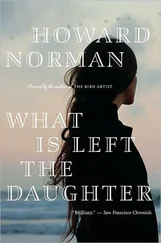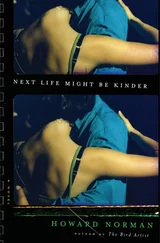I was adrift. Between graduating from high school in 1967 and moving to Halifax in 1969, I had lived in Toronto, Ottawa, Berkeley, and Vancouver. As for employment, for eighteen months I wrote pop music reviews for the Interpreter, an alternative newspaper based in Grand Rapids. One of my assignments was to cover a concert in Vancouver by Donovan, an immensely popular Scottish singer and songwriter. The next assignment was to write an article — my idea — about the Institute for the Study of Nonviolence, in Palo Alto, California. To get from Vancouver to the institute, I purchased a jeep for $350 and began to drive south. It was my first time on the West Coast. I stopped in Inverness and Point Reyes Station, California, where I stayed for a dollar a night in a kind of fisherman’s shack at the end of a dock jutting into Bodega Bay. Under the dock, ducks found shelter from the rain. Pelicans were a constant presence. By the time I had walked three trails at the Point Reyes National Seashore, I had planned to return there.
When I finished my article on the Institute for the Study of Nonviolence, having met its two founders, Joan Baez and Ira Sandperl — the most enthralling intellect I’d ever met — my antiwar convictions solidified. Yet when I left Palo Alto I still felt unsettled. I spent the summer in a cottage in Jeffersonville, New York, a twenty-five-minute drive from Max Yasgur’s farm and the Woodstock festival. I attended this monumental event. At the end of that summer, my only goal was the cheap hotel room in Halifax.
So I found myself in a Canadian city that I was determined to know better. I also had designs on writing radio plays for the CBC. I thought I would trace one family’s story from their fleeing Hitler’s persecution to their arrival through immigration at Halifax’s Pier 21—a major port of entry for refugees — and their subsequent life in the city. I had outlined a ten-part drama on this subject, but I’d never written for radio before. Truth be told, I simply wanted to be able to say to someone, “I write for radio.” Just that sentence gave me inspiration, as fatuous as it may sound. In fact, I’d seen a CBC advertisement for “auditions,” which meant you could send in a radio play and they would decide whether to use it or not. I was twenty; it all seemed like a good idea at the time. It was my only idea at the time.
For a few evenings I’d been listening to the jazz pianist Joe Sealy’s record Africville Suite. Sealy’s father was born in the section of Halifax known as Africville. Sealy himself was working there at the time of the unspeakable “relocation” of the mostly black community during the years 1964 through 1967, and Joe Sealy composed the Africville Suite in memory of his father. My girlfriend Mathilde Kamal’s mother was also raised in Africville. I’d been thinking about the last conversation I had with Mathilde, two days before her four-passenger charter plane, subjected to blizzard conditions and possibly pilot error, slammed to the frozen ground in Saskatchewan — the bleak winter landscape that was the exclusive subject of her latest watercolors.
Mathilde was twenty-six when I met her. She was worldly, and I was a pin stuck in a street map of Halifax, at 416 Morris Street, my address that autumn and into the winter of 1970. Too often self-deprecation can be a form of self-regard: I’m nothing — praise me. To my mind, self-deprecation is useless except when it is used as the first rung on a ladder of self-reckoning. Once at a restaurant, before we ordered dinner, when I’d lamented the great differences in our educations and experiences—“Mathilde, after all, you’ve lived all over Europe!”—she tapped her wine glass with a spoon as if about to offer a toast. “Distasteful way of thinking, my friend,” she said. “You are what you are. I love you. Now let’s order. I’m very hungry.”
But by any standard, Mathilde was worldly. She had been born in Morocco of a French father and a Canadian mother — her parents had moved to Morocco the year before Mathilde was born — educated at the Sorbonne, had had exhibitions of her work in London and Bruges, and had been married for a year to a much older man, a museum curator in Amsterdam. After finalizing her divorce, she moved to Halifax, where she lived in a shabby two-room apartment on Robie Street near Citadel Park. “I moved to Halifax because the Nova Scotia College of Art and Design offered me a course to teach,” she’d said. “I wasn’t good at it. But it paid the rent and I liked the city. So here I am.”
The moment we met, in early September 1969 in a café on Hollis Street, I was attracted to her, but not in a head-over-heels way. I think she sensed this, and it put her at ease. Mathilde had, as she put it, “suffered adoration” in her life. She often spoke autobiographically, but seldom confessionally. When she was nineteen, her future husband had pursued her, which she emphatically said bored her to tears. “Because men look, doesn’t mean you look back.” She had aphorisms about such things; some were more convincing than others.
During the first months of our courtship, it was almost entirely a matter of her fixing on me her affection and commitment. She did this with her eyes wide open, with full agency, and without compromise, and because it pleased her. She wanted life to be different, so she made it different. This, for the first time in my life, made me feel attractive, but it was because she intensified the attractiveness of life, and drew me into that. It was like being invited into a philosophy. I wasn’t passive, I was just riding a strong wave. She had purpose. She had talent and flair. She liked to quote some movie or other in a defiant, Bette Davis voice: “Like I said, I don’t quake when things get tough, and I don’t make deals with the devil.” I was what might be called a work in progress; Mathilde already had definite refinements and opinions enough to fill a thick volume. Her opinions always struck me as born of experience, but of course they couldn’t all have been.
With Mathilde I was taken by surprise, grateful, but resistant, questioning, and vigilant about complications — and then slowly, painstakingly, I realized I was indeed head over heels. We held hands everywhere. One summer day I called her darling. This just flew out; it was not a word I’d heard used by my parents, nor had I ever used it myself. (I’d heard it in the movies.) Mathilde used it often and freely. She said it with feeling. It all seemed a lot to fit into less than a year’s time. Then Mathilde was gone.
Mathilde first exhibited her work in 1967, part of a group show in a warehouse space in north London. I saw only photographs of the paintings: eight works in oil that were as far in aesthetics, style, and subject matter from her future watercolor landscapes as could possibly be imagined. For one thing, the early paintings were full of people; her final landscapes not only had no people in them, but the settings suggested that people had never lived in them.
Her part of the London exhibit was called “Memories of Africville.” The title referred to her mother’s memories and to things Mathilde had discovered while doing library research. To the extent that these paintings comprised a cumulative portrait of hardscrabble life in Africville, there was a near-documentary immediacy to them. Mathilde, at that young age, used paint in a way she herself said was influenced by Chaim Soutine, whose paintings she’d studied in Paris, where Soutine had lived. “Paint put on thickly, emotion put on thickly,” she explained. “Even his trees are emotional.” She made portraits of black seamen, Pullman porters, domestic servants. She painted meetings of the African Baptist Association and local churches. There were three paintings of the Africville prison. One work depicted a solid-waste facility built to take the filth of a neighboring town, another showed people scavenging for clothes and lengths of copper pipe in a garbage dump. There was a painting of children in an infectious-disease hospital.
Читать дальше












